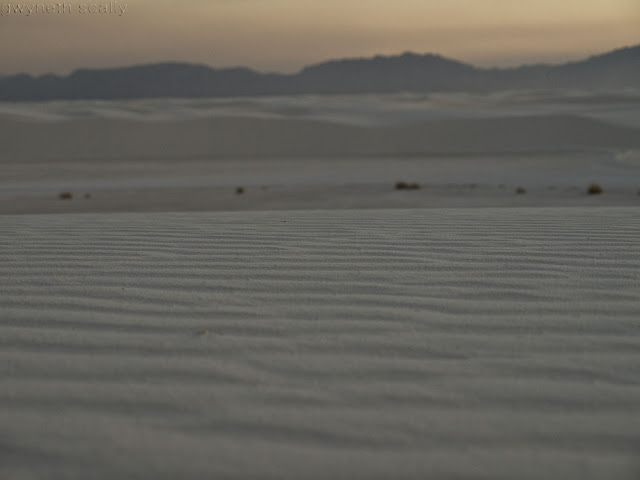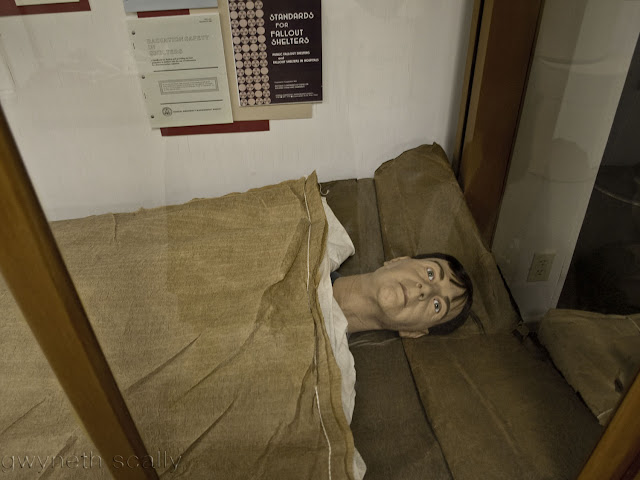The above photos were all taken a couple of weeks ago at White Sands, New Mexico. Millions of years ago, there was a sea... and it left layers of gypsum in the mountains, and now, as the mountains erode, the white gypsum sand is swept into the Tularosa Basin, with nowhere to go. And so, in this strange, dry, landlocked place, there is a beach, two hundred and seventy square miles of the most pristine white sand imaginable, piled into steep dunes that are constantly shifting and reforming under your very feet.
Miraculous. Also, the visitor's center cheerfully supplies sleds for visitors.
Petrified hot dog.
Below-
New Mexico is a strange place. Quite shockingly beautiful, and also a bit dire in its poverty; even Albuquerque seems a bit shoddy, and Santa Fe, though charming and historic, has a slight Disneyland quality. There are, in New Mexico, vast stretches of really nothing at all- just yellow, dust-filled, hot wind across a yellow vast flatness, with the occasional antelope carcass to relieve the eye. And, in places, odd little communities that seem like outposts from another country- collections of adobe houses and farmland that are sometimes quite lush and lovely (especially near Taos and the highland areas). But towards the south, near White Sands National Monument, this otherworldly beauty exists. Ravishing at sunset, relentless at noon, and always laced with a faint unease. Trinity site is quite nearby, you see- maybe just over that dune right there.


The missile testing base at White Sands is very much an active and bustling institution. There is a small, poorly maintained museum of various US missiles and bombs- all rusting away in the fierce sunshine- and an indoor museum (or offhand assemblage of whatever they had floating around in storage) describing the development of atomic testing, the Cold War, etc.
I climbed into the gun turret (?) above, and discovered that two small, darting swallows had made their home inside. They seemed very shocked to find me in their small territory. The phrase "Guns to plowshares" has always had such a timeless an moving quality. I know that it would be cheesy of me to say something along the lines of "guns to bird's nests..." Sorry.
The exhibit curators apparently had no idea who made this rather glorious, and glorifying, painting of a U.S. rocket racing through the storm clouds.
This vitrine contained a mock-up of a fallout shelter. There were supplies and instructional safety posters, and this life-sized mannequin resting on an army-issue cot. I suppose that I would be equally wide-eyed if I found myself in a fallout shelter.
The gents on the base got rather bored at times.
And- before I switch out to the next topic- can I just give some props to friend and fellow artist Chris Dacre? I was reminded of him because he was teaching printmaking right outside of White Sands- and considering the ideas behind his work, it seems that he must have found a terrific amount of material out there. You can see more of his work at chrisdacre.com.
This wonderful little taxidermy shop was near Taos. It was packed inside, and absolutely stinking of Bondo. Looking at the exterior, I rather expected to find it abandoned, but two impressively courteous and friendly guys were beavering away inside, and they seemed more than happy to show off their craft. They were perfectly fine with me taking pictures, and were very informative about their -apparently- highly successful concern. I wanted to take the shop sign home with me.
...filling in the styrofoam mount and attaching the horns
...stretching the skin over the mount


























































